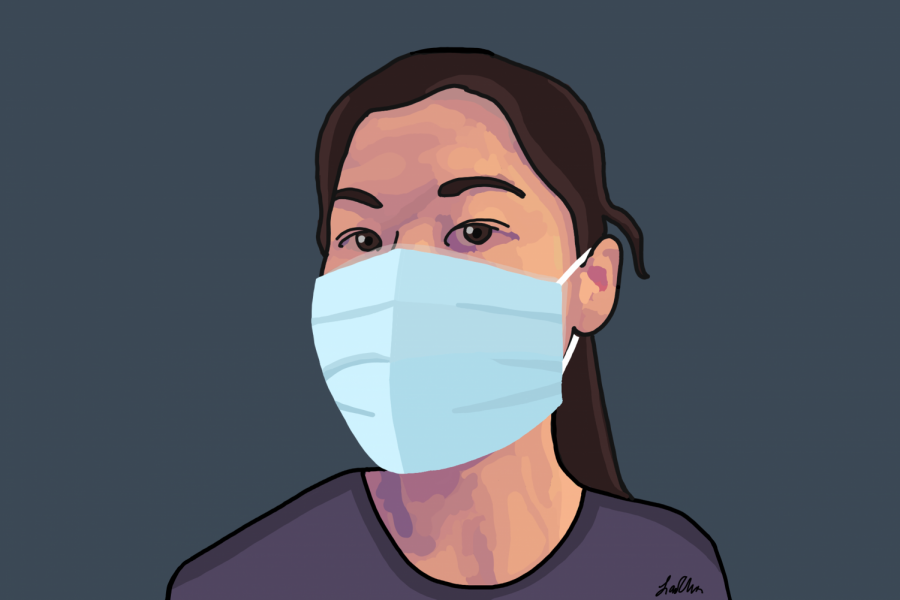Americans struggle during nationwide PPE shortage
American citizens in many major cities must now follow guidelines for wearing masks whenever in public areas.
May 3, 2020
Amidst rising COVID-19 cases and a rapidly depleting supply of equipment, U.S. officials and experts have been recommending the usage of homemade alternatives for masks while attempting to address the most pressing uncertainties surrounding these protective measures.
Behind the shortage
Currently, there is a shortage of N-95 masks available to health care workers, and it is a contributing factor to the increasing number of deaths of health care workers in the United States. Some without proper personal protective equipment (PPE) are being forced to wash and reuse masks when sufficient supplies are not available, greatly decreasing their effectiveness.
Even before the COVID-19 outbreak, the U.S. was woefully underprepared for the pandemic.
According to USA Today, the U.S. maintains a Strategic National Stockpile of medical supplies for use in emergencies, but it was greatly depleted during the Obama administration due to severe hurricanes and the Ebola and Zika virus outbreaks, and it was never restocked afterward. ProPublica added that the Departments of Defense and Health and Human Services that ran the Stockpile had a greater focus on restocking lifesaving drugs over PPE because they never foresaw a shortage of masks or gloves. As of early March, the U.S. had 12 million N95 respirators and 30 million surgical masks in its national stockpile, which officials had admitted was just 1% of what the country needed in a pandemic.
Similarly, the health care industry also suffers from a lack of ventilators, which enable severely weakened patients to breathe by delivering oxygen into the lungs and removing carbon dioxide.
“There’s been an underinvestment in the U.S. in planning for a pandemic for years,” Gerald F. Seib of the Wall Street Journal stated in a March 4 video.
Seib explained that in 2018, China was the largest exporter of fabrics used in N-95 masks, which contain polypropylene that filter out pathogens. Although the U.S. also produces these fabrics, the production cycle has been greatly reduced and the demand is too large.
“The U.S. is now reliant on a global supply chain which has been disrupted during this crisis,” he said.
The debate over who should be wearing masks
The shortage of N95 masks has sparked a messy international debate over whether or not uninfected citizens should wear masks in public, and if so, what type of mask they should wear.
Some experts such as the World Health Organization (WHO) have warned that the wearing of face coverings among the general public may spur autocontamination or the improper disposal of masks. Face coverings may also unintentionally grant wearers a false sense of security, resulting in problematic cleaning, wearing and removing habits. Last, the WHO, Centers for Disease Control and Prevention (CDC) and Trump administration were hesitant to recommend wearing masks in public for those free of symptoms, because they believed this could incite paranoia and worsen the shortage.
However, the CDC has recently begun emphasizing that face coverings function as an additional measure to protect others in case the wearer is infected but does not show any symptoms. Face coverings are not a substitute for social distancing and are not intended to protect the wearer from the virus, but they may prevent asymptomatic carriers from spreading COVID-19.
On April 3, the CDC recommended that everyone wear a mask in public, to the immediate contradiction of President Trump, who emphasized that it was voluntary and that he himself was not going to wear one because he tested negative for COVID-19 in the past.
President Trump’s recommendation was to wear a “basic cloth or face mask, not medical or surgical-grade masks,” as reported by the New York Times, in order to prioritize N95 and other surgical-grade masks for health care workers.
In accordance to the CDC’s recommendations, many officials have begun erring on the side of caution, reversing their decisions and regulations. As of April 17, the Contra Costa Country has officially required that people wear face coverings in public areas.
Many individuals continue to worry that non-N95 masks are not effective enough to block out pathogens, however. Despite conflicting beliefs, some sources have shown that face coverings can help reduce transmission, such as a New York Times article by Knvul Sheikh citing past studies of influenza pandemics that found that surgical masks could be as much as 68% effective in stopping virus transmissions.
Experts have also pointed out that even if cloth masks cannot filter out pathogens, they can serve as a reminder to keep your hands from touching your face, which helps reduce transmission rates.
A revamped production chain
With PPE in short supply in the U.S., the CDC has recommended that citizens wear “simple cloth face coverings” to slow the spread of the virus, fashioned out of low-cost materials available around the house. A video by U.S. Surgeon General Dr. Jerome Adams (see below) offered an example using materials available around the house, such as old scarves or a T-shirt and two rubber bands.
[Embed video]
Major factories and local businesses have also converted their production to join the manufacturing chain. Peter Seltzer, founder of Pete’s Papercrafts, has been collaborating with other shops around metropolitan New Orleans to refit and build all the necessary pieces for face shields, delivering more than 1,000 face shields a day, with plans to expand production even more.
“I will work every single minute of the day, as long as I can and I will have my staff do the same thing so we can help people on the front line,” Seltzer said.
Today, with COVID-19 overwhelming America’s health care system, the scarcity of ventilators and PPE has become an extremity, forcing some doctors to make life-or-death decisions about who gets to breathe and who does not.
However, doctors Kevin Dyer, Robert Conley and Saud Anwar from Connecticut have taken on the ventilator shortage by developing a simple splitter device that can be used to create a multiple branch so that several patients can be hooked to the machine at once. After the team uploaded their design worldwide, the design had been downloaded about 1,000 times in more than 100 countries like Zimbabwe and South Africa.
“Our hope is that somewhere in the world, as the crisis continues to unfold, that this design will be able to help someone, somewhere who doesn’t have the access to all of the technology that is in the U.S.,” Dyer said.
As the pandemic spreads, however, the desperation for more adequate PPE and ventilators will only grow.
“The longer this epidemic goes on for, if doctors feel that there is a widespread lack of personal protective equipment, then some doctors may feel they have no choice but to give up their profession they love,” Dr. Rinesh Parmir, chair of the Doctors’ Association in the UK, said to The Guardian.
Companies like Evolve Manufacturing in Fremont are stepping up to solve this problem by redesigning and repurposing their existing manufacturing lines. Supporting the private sector’s redirection toward PPE production, the federal government itself, however, has refused to initiate any of its own manufacturing of critical health care equipment.
Do homemade masks help medical frontline workers?
Unfortunately, homemade cloth coverings do not have the ability to protect the wearers from infection. N95 respirators are far more likely to shield against viruses, but even surgical masks do little in the way of protecting the wearer.
In the worst case scenario, the CDC states that homemade masks may be used in combination with face shields and other PPE.
As of now, local hospitals are allowed to use donated homemade coverings, enabling caregivers, health care workers and patients to reserve PPE for higher risk situations. Regulations on how often to clean such masks and reuse them are still under study.
Currently, the public can contribute to the fight against COVID-19 by donating PPE or funds to non-governmental organizations such as Donate PPE, which also operates in California.
“The longer this epidemic goes on for, if doctors feel that there is a widespread lack of personal protective equipment, then some doctors may feel they have no choice but to give up their profession they love,” Dr. Rinesh Parmir, chair of the Doctors’ Association in the UK, said to The Guardian.




